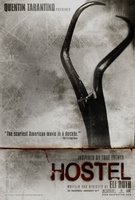Here's a very interesting article on blogging from
Ad Week. It's pretty long, but you need a membership to read it online, so I posted it all here. Enjoy!
Blogs are hungry beasts that want to be fed." "American teens devour and feed Web content." "[A blog] is a real commitment. It can become very ravenous." In mainstream-media stories about blogging, it's funny how the metaphors usually veer toward eating and/or being eaten. Even the word blog can sound gastronomical after a while. The stories themselves start to feel like cautionary tales, with an underlying warning straight out of a horror movie: If you get too close to this unpredictable, all-consuming blog monster, it just might lunge out and grab you and gobble you down whole.
Partly, it's the sheer size of the beast. The blogosphere (note the -sphere suffix, usually reserved for geological or atmospheric regions, as in really big stuff) is currently made up of nearly
24 million individual blogs, up from 5.4 million just a year ago, as measured by Technorati. More than 80,000 new blogs spring up every day—which works out to almost one per second (surpassing even suckers, born every minute). And these estimates of the blogosphere's girth are almost certainly low; both Technorati and BlogPulse admit that there are many more blogs in Asia and elsewhere that they are unable to count. All those opinions add up to unprecedented consumer power.
Despite howls of death by blog (a la Neil French), blogs are more like life—post-millennial U.S. life in particular—in which every possible topic of interest gets stuck on a loop of instant replay, driven by our media-consumption habits, in turn driven by our ever-expanding technologies.
A crucial effect of blogs, even now, in their infancy,
is that they are changing who is in control of that loop. If TV, radio, newspapers and magazines offer the "official" camera angles for public life, now keyboard-tapping consumers offer millions more—a groundswell of observation, analysis and commentary on a scale that mainstream media could never match, even if it had unlimited TV channels, production budgets and barrels of ink. Journalists may complain about bloggers' unchecked facts and questionable sources, but since when did large numbers of Americans consider corporate media outlets unbiased sources of information?
Bloggers develop trust through the consistency and immediacy of their writing, and by projecting (in most cases) authentic voices ostensibly free from corporate interests.
Among U.S. adults who use the Internet, 9 percent say they write blogs, and 27 percent say they read them, according to recent numbers from the Pew Internet & American Life Project. The traffic figures, too, are mind-boggling, at least among the more heavily visited blogs. Daily Kos, a hugely popular political blog (named Best Blog overall at the 2005 Weblog Awards in December), gets more than 500,000 hits a day, according to traffic site The Truth Laid Bear.
If the numbers are impressive, so is the variety. Blogs range from amateur to professional, individualistic to group-minded, high-brow to lowbrow, comic to serious. The vast majority are written by people for whom it's a hobby, but they're being joined by businesses, professionals, educators, academics, teachers, students and politicians. Last month, the University of Illinois even figured it was a good time to launch a blog about farming. Blogs cover literally everything under the sun, from world politics to the relative physical attractiveness of specific San Francisco dogs, from the New York Yankees to your kid's T-ball team. There are blogs about blogs. There are blogs about blogs about blogs. No wonder it feels overwhelming and ridiculous.
Some people have tried to give some shape to the mass. In November, a blog called Mister Snitch! ("Bringing the unwashed masses the view from Hoboken. And a washcloth.") identified seven distinct types of bloggers and their typical focus: the meme-du-jour blogger (big ideas of the moment); the caterer (whatever readers want); the nicheblogger (whatever the blogger wants); the Internet guide (whatever readers should want); the celebrity-blogger (him or herself); the service-blogger (video, stats and other tools); and the long-tail blogger (pretty much everyone else). Another site, Kuro5hin, broke it down this way: the teenie blogger, the techie blogger, the blog blogger, the war blogger, the hippy blogger, the goth blogger and the link blogger. These definitions are rudimentary at best; it's like taking everyone in your hometown and sorting them into groups; more than a few aren't going to fit.
Big media are joining the party. The Atlanta Journal-Constitution is running 45 blogs on its Web site, covering entertainment, local sports, technology, parenting, relationships, gardening and more. And major media organizations like the BBC, The New York Times, ABC News and MSNBC have all entered the space, with varying degrees of commitment. (Adweek launched its own blog, AdFreak, in November 2004.)
Corporate America is also curious—and let's face it, mostly terrified. Driven almost exclusively by passion, not commercial interests,
amateur blogging is a patently foreign concept to most corporate cultures. And corporations fear a power struggle. Under the traditional communications model, companies derived authority in the public discourse by spending huge amounts of money on outbound messaging.
But bloggers are gaining authority themselves, at a fraction of the cost. Under the new model, bloggers gain influence by being insightful, funny, helpful, snarky, whatever—by being interesting—in a media form that is dirt cheap to buy into and increasingly easy to operate. Plus,
bloggers have a head start in earning a media consumer's trust. Unlike marketers (and most mainstream media, for that matter), they aren't asking for your money. (
Many of them are, however, asking for advertisers' money, but that's another story.)
Many marketers may feel they have little to gain from this consumer empowerment, as though blogging were a gateway drug that could lead nowhere but brand-bashing. Others feel quite the opposite. Steve Rubel, a PR strategist who writes extensively about blogging at MicroPersuasion.com, believes
blogging has the potential to completely humanize the business world. "It gives consumers the ability to see and hear from the people inside the companies they love (and hate). And it gives companies the ability to do the same with customers," he wrote on the Radiant Marketing Group's Web site last year. "In short, the future of blogging is public relations. This is not PR, but actually relating with publics."
It's already happening on a limited scale. Companies are experimenting with internal blogs as utilities to get information to employees. And they're trying their hand at public blogs, with varying degrees of success—or, rather, some say, varying degrees of boneheadedness.
Some companies have fired workers for musings they wrote on their personal blogs. Not confidence-building. Others saw non-employee bloggers as mites to be squashed. FedEx, for example, flipped its lid last summer after an Arizona man created a blog to display some oddball furniture he had made from FedEx boxes. The company quickly invoked provisions of the Digital Millennium Copyright Act to force the site down. "Our boxes are for shipping. That is pretty obvious, since we are a shipping company, not a furniture-building company," a FedEx rep explained, in all seriousness, to a popular PR blog afterward. "All we're asking him to do is respect our name and materials, and stop using them for his Web site and his endeavors. That's all it comes down to." Actually, what it came down to was what many believe was an unnecessary show of force against one of the company's biggest fans.
Other marketers are capitalizing on the medium. In mid-October, Budget, the rental-car company, launched a blog called Up Your Budget, which became the Internet home of a four-week treasure-hunt game in which Willy Wonka-like stickers were hidden in 16 U.S. cities, with cash prizes of $10,000 for the people who found them. The blog featured video clues, cartoons, winners' stories and more. Hunters became obsessed, in some cases traveling around the country following the clues. "I felt like Doris Day searching Ambrose Chapel in The Man Who Knew Too Much," one player wrote in the comments section of the blog. Corporate blog strategist B.L. Ochman directed the effort for Budget. At its peak, the site attracted more than 10,000 visitors per hour.
One year ago, General Motors vice chairman Bob Lutz began writing a blog called FastLane.
His weekly posts have given the corporate monolith a human voice and have served as an early model for how online conversations with consumers can work. "We've published close to 6,000 comments, an astounding number to me, and GM leaders have read each and every one," Lutz wrote in a holiday post to readers last month.
"It's really a refreshing mode of communication, one I was delighted to discover and explore this past year."Marketers have everything to gain from this kind of openness and transparency. Yes, bloggers take companies to task over shoddy products and customer service, but they also build buzz around products they like and companies they respect. And by using blogs to listen to their customers,
marketers can learn how to earn that respect rather than demand it. In that sense, the blogosphere is all about letting go. Try to defend against it, and it may well chew you up and spit you out.
Embrace it, and it won't hurt a bit.
 At first I was sceptical. Do we really need another medical drama on TV? With M*A*S*H, ER, Chicago Hope, Crossing Jordan, Doogie Howser, Scrubs, House--how could Grey's Anatomy be different? Oh me of little faith.
At first I was sceptical. Do we really need another medical drama on TV? With M*A*S*H, ER, Chicago Hope, Crossing Jordan, Doogie Howser, Scrubs, House--how could Grey's Anatomy be different? Oh me of little faith. "The five interns fight to maintain friendships in this most stressful and competitive atmosphere. Meredith's medical ambition is overshadowed by a troubling secret: Her mother, a noted pioneering surgeon, is suffering from a tragic and devastating illness. Cristina is a study in contradiction; highly competitive and driven, she eschews any favors in order to make it on her own. Isobel "Izzie" Stevens, the small-town girl who paid for medical school by modeling in her underwear, battles for respect amongst her peers. George O'Malley is the warm but insecure boy next door who always manages to do or say the wrong thing - even in the O.R. Worse, in spite of his obvious attraction to Meredith, he's treated as "just one of the girls." And Alex Karev, the intern every intern loves to hate, masks his working class roots with arrogance and ambition. "
"The five interns fight to maintain friendships in this most stressful and competitive atmosphere. Meredith's medical ambition is overshadowed by a troubling secret: Her mother, a noted pioneering surgeon, is suffering from a tragic and devastating illness. Cristina is a study in contradiction; highly competitive and driven, she eschews any favors in order to make it on her own. Isobel "Izzie" Stevens, the small-town girl who paid for medical school by modeling in her underwear, battles for respect amongst her peers. George O'Malley is the warm but insecure boy next door who always manages to do or say the wrong thing - even in the O.R. Worse, in spite of his obvious attraction to Meredith, he's treated as "just one of the girls." And Alex Karev, the intern every intern loves to hate, masks his working class roots with arrogance and ambition. "










